| 1 | Encroaching towns |
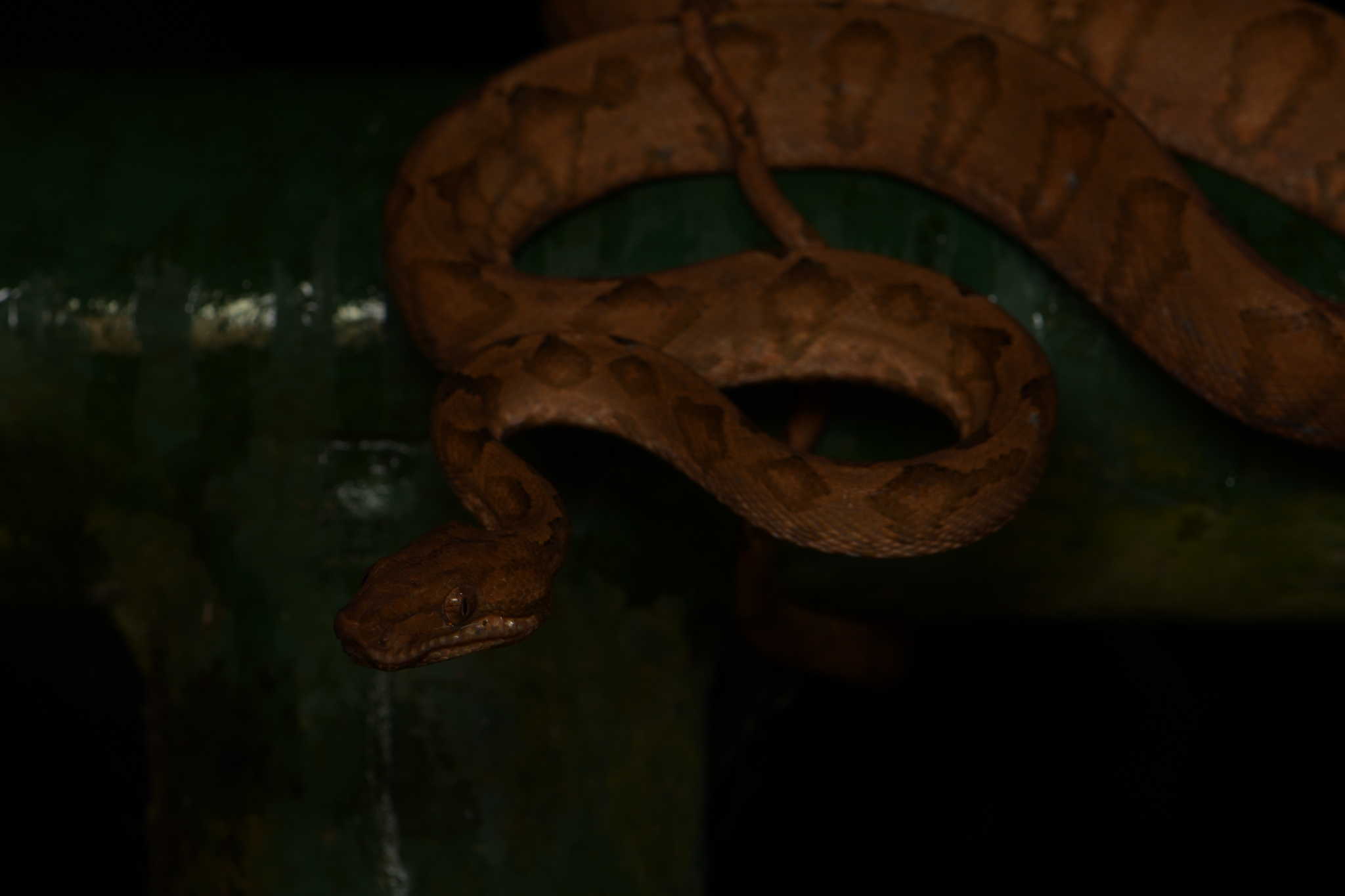
The first threat facing snakes is a familiar one: urbanisation. It’s not surprising that when towering skyscrapers and slabs of concrete replace pristine forests, snakes tend to disappear. Many snakes worldwide live exclusively in forests, whether it’s eyelash vipers, blunt-headed tree snakes or sipos. Formerly strong local populations can vanish within weeks after rainforest loggers move in, unable to live in the bean plantations which replace them.
Deforestation also cripples snakes adapted to dry forest, not just rainforest. Mexican cantils are a cottonmouth relative found in the tropical thorn forests of eastern Mexico. These forests aren’t as obvious a candidate for protection in nature reserves, and have been remorselessly slashed down and replaced with towns. While Mexican cantils aren’t critically endangered, they live in ever more fragmented pockets, as they cannot cope with urbanisation.
It’s not just forest destruction, but forest type, the conversion of natural ecosystems to manmade plantations. The rare Louisiana pinesnake depends on longleaf pine for its survival, in a delicate balance with dry soils, pocket gophers, and regular wildfires. But over 50% of Louisiana’s forests have been converted to manmade slash pine, which this snake is never found in.
| 2 | Road traffic |
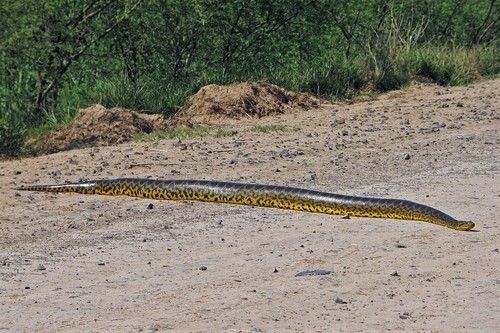
Some snakes cope better with deforestation, but then face a new manmade threat: roads, and the screeching tyres driving along them. The likes of gopher snakes aren’t fast enough to avoid speeding automobiles, even if they recognise the deadly threat. For example, one study found that within 450 metres of busy roads, the gopher snake population was depressed by 50%. The biggest study on the gopher snake’s diet to date (which found 80% mammals) simply used roadkill snakes, as they were so easily available.
Sometimes it’s deliberate. In the early 1970s, LaRue road in Illinois was declared the world’s first protected road for snake crossings, but the local teenagers were disappointed, as it eliminated their blood sport of running them over. In the USA, corn snakes and smooth green snakes are also found with tyre marks on their back.
The danger affects many species worldwide, while some are immune. It varies, as many are smarter about bustling highways. For instance, the prairie kingsnake of Kansas was found to instinctively avoid roads, while giant garter snakes only cross roads by using underground water channels. But this can create new problems, as roads bisect snake habitats and prevent them from recolonising each other.
| 3 | Prey that fight back |
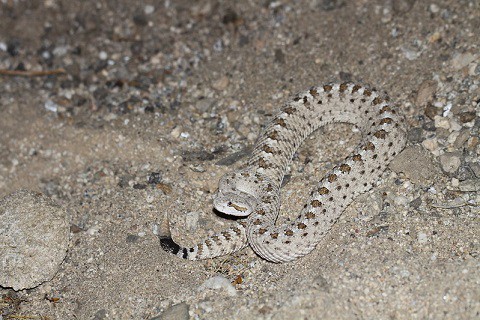
A more natural obstacle, meanwhile, is prey that simply don’t want to be eaten. The whole UK became aware that snakes can be fallible and imperfect predators in 2016, after the broadcast of Planet Earth 2. It showed a Galapagos racer attempting to hunt an iguana, followed by another, and another, until 20 hungry racers were closing in on a scaly snack. Amazingly, the iguana summoned up all its nimble acrobatic agility and dodged the snakes, scrabbling through rocks, and avoiding one racer’s mouth by mere inches.
In the Mojave desert, the sidewinder has a lethal venom, and supreme beige camouflage against the sands. But the kangaroo rat has a better weapon: kicking them in the head. This video shows one kick a sidewinder so hard during a mid-air jump that it was propelled far enough in the opposite direction to escape.
In Tasmania, tiger snake’s bodies are often covered with scars from rodent prey that gnawed on them in self defence. That’s the ones that survive. Coastal taipans occasionally die from rodent blowback. You can’t beat an inflating frog as well, turning into a balloon so that a snake cannot physically gulp them down.
| 4 | Agricultural takeover |
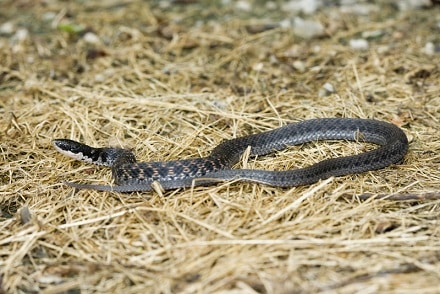
Slashing down forests is obviously bad for snakes, but conversion of open ground like meadows or hillsides can be just as damaging. Farms themselves can be damaging, as some snakes are so confident of a free reign that they stumble into high tech machinery and get shredded, like the large whipsnake of Israel. The worst effects happen to quieter burrowing species. The Palestine kukri snake, another Israeli snake, thrived in dry grassland and rocky Mediterranean hillsides. But these were ripe for conversion to agriculture, and its range is increasingly fragmented.
It wouldn’t be right if we didn’t mention snakes that thrive in agricultural land, typically because of the enormous rodent colonies living there. Again, it tends to be the quieter 30-50cm snakes that suffer, often ones with little research, rarely sighted in the first place. The likes of European worm snakes, abundant in Greece, can’t cope if the upper 30cm of soil is constantly ploughed and furrowed. They will vanish from the hillside they’ve occupied for millions of years. In the USA, the Kirtland’s snake of Ohio is badly affected, a former meadow dweller whose range is steadily shrinking.
| 5 | Bursting |
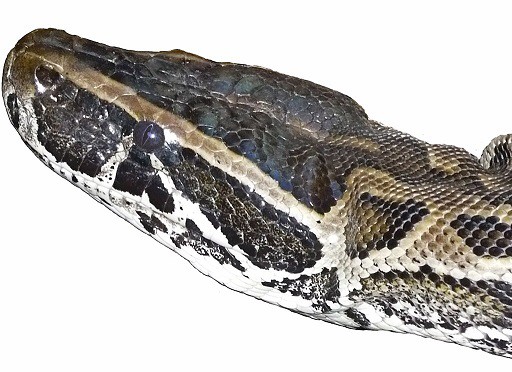
Exploding is an all too real threat for wild snakes. Becoming grossly distended after swallowing a rabbit is normal and healthy, but there are still limits. Consider African rock pythons, which regularly eat prey over 100% of their own body weight. In 2015, one exploded after swallowing a 30 pound porcupine, possibly after falling off a ledge with the large spiky meal inside.
Spikes are a huge obstacle for wild snakes, which they may not comprehend until it’s too late. Brown watersnakes get 60% of their meals from catfish. They take steps like rotating catfish mid-swallow to avoid the spines, but still get pierced and die occasionally. Some are luckier, with spines found in their bodies from 5 years earlier. Another exploding snake was the Burmese python, which attempted to swallow a 6 foot alligator in the Everglades.
Some snakes are naturally cautious and conservative about their meal size. A black mamba’s meals were found to average at 4.72% of its own body weight. But tiger ratsnakes sometimes gobble up so many mice in captivity that they die.
| 6 | Wells, pits, etc |
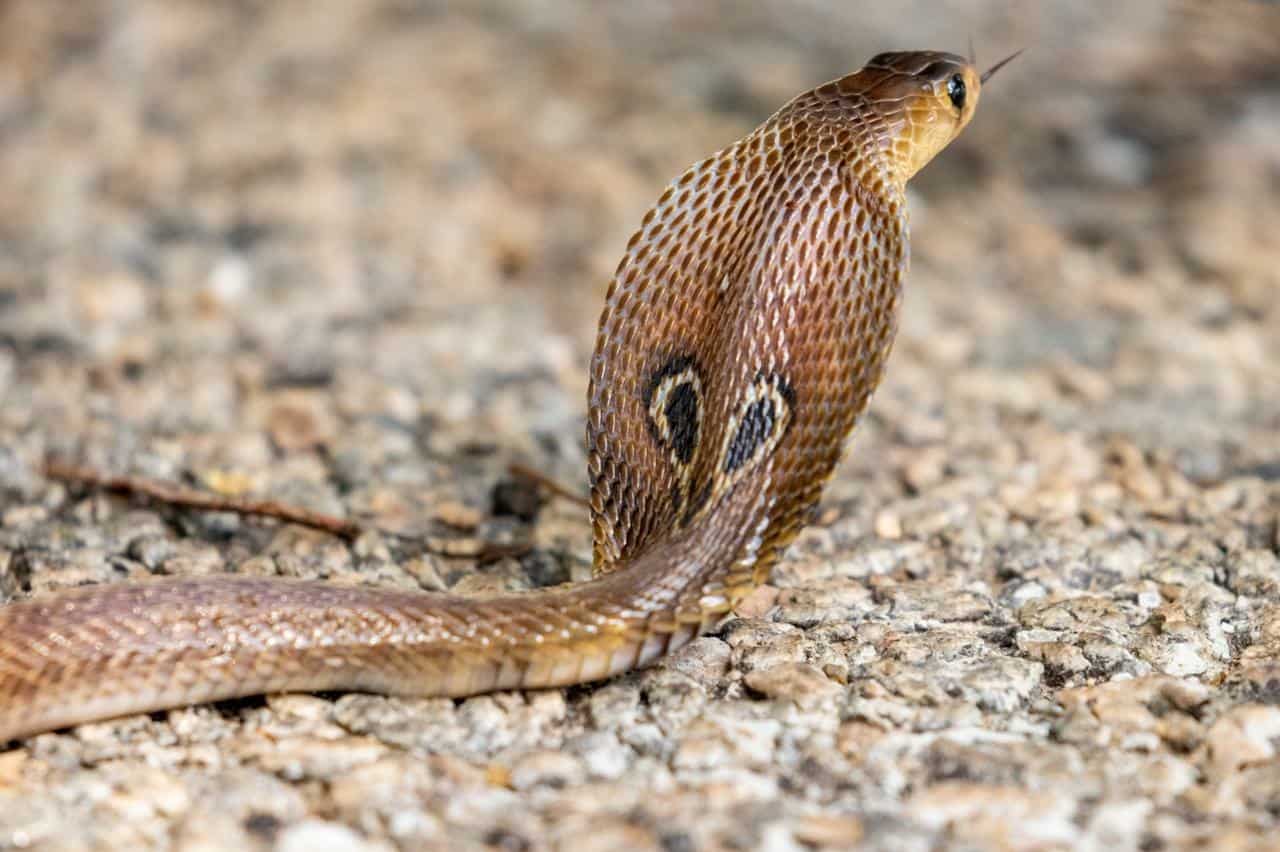
Many snakes are superb climbers, travelling up a fully vertical tree trunk using fissures in its gnarly bark as the only leverage. But they’re not infallible, and smooth sided stone, the type found only in artificial human construction, can be too much for them.
For example, Morocco’s Assa deserts are filled with underground storage holes designed for capturing water in the brief rainy season. Nearby lives the Saharan horned viper, which has evolved in sand dunes and rocky deserts for millions of years now. They sometimes become trapped in these inexplicable holes, with no way out except a ladder, their lack of arms finally coming back to bite them. They’ve been found dehydrated and barely alive, and in 2017, this resulted in a heartwarming scene where a horned viper gratefully lapped up a small pool of water, poured out by the rescuer from his plastic water bottle.
In 2011, an Indian cobra was found trapped in a stone well in Tapil Nadu, India. It was alive, and once disappeared underwater for 20 minutes before surfacing for oxygen, but had no way to escape. Eventually, exhaustion or starvation would have claimed the cobra’s life. The scientist rescued the cobra from the well, and avoided being bitten, having discovered that Indian cobras can hold their breath for longer underwater than thought.
| 7 | Subtle habitat destruction |
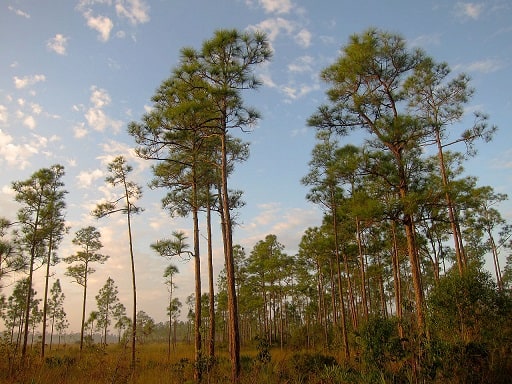
Sometimes snakes have very subtle requirements, making it easy for them to spiral into oblivion. For example, the broad-headed snake of Australia lives in rocky outcrops in national parks, with slabs resting on top of each other, which they rest in to ambush lizards. Ornamental bushrock is popular in suburban Sydney gardens, and illegal rock poachers often head to national parks, but stealing just a few slabs can disrupt the snake’s ecosystem. Likewise, the Chinese garter snake lives in streams and small lakes in the countryside, which are plentiful. But they also require untouched dry slopes within a few hundred metres, to act as their winter hibernation sites. Conversion to agriculture wreaks this delicate balance.
In the UK, the oft forgotten 3rd snake species, the smooth snake, relies heavily on heathland. Much of this has been removed, or was destroyed during World War 2 bombing drills. Just pockets of its habitats remain, as their required habitats are so specific. The rim rock crown state of southern Florida is incredibly specific, requiring tropical hardwood, hammocks and pine rocklands. Near Miami, 50-98% of these habitats have been lost since the early 20th century, converted to parking lots and Walmarts. Some snakes are the opposite, incredibly flexible, such as the boa constrictor, which appears almost anywhere.
| 8 | Bird mobbing |
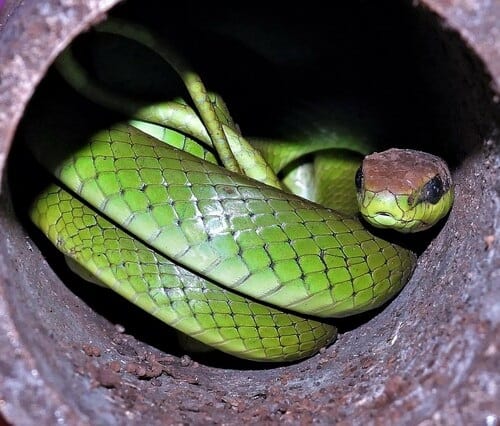
Many snakes love to pinch birds from their nests, like puffing snakes or corn snakes. The rewards are great, but so are the risks. The mother could attack to protect her babies, inflicting grisly wounds. Then there’s a bird-eating snake’s greatest fear: “mobbing”, when birds produce calls that summon all their fellows, and they all attack simultaneously.
The birds flap, squawk and caw, not necessarily drawing blood but creating such a ruckus that the snake is forced to back off. Birds even produce certain caws for certain predators. Its allies will know it’s a snake they’re dealing with, and adjust their strategy accordingly. Tiger ratsnakes are mobbed by thrushes, oriental snakes are mobbed by Indian mynahs, and Jamaican boas are mobbed by crows.
Sometimes the snake can be so flustered that it plummets to the ground. Alarm caws can even summon in neighbouring bird species that had no connection to the fight. In 2006, a Lichtenstein’s green racer tried to hunt a house sparrow on a tree in Campinas, southeast Brazil. Within minutes, it was being mobbed by chalk-browed mockingbirds, rufous horneros, bananaquits, and rufous collared sparrows, most of whom weren’t being hunted, but took extreme precautionary measures. The racer wisely retreated.
| 9 | Mass exterminations |
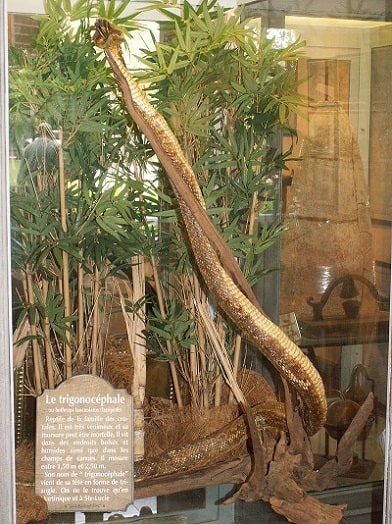
Snakes are also at the mercy of random counts or mayors who decide that the time is ripe for an extermination. Martinique lanceheads are the main venomous snake of their Caribbean island, and can reach 2.5 metres. Their venom can trigger a heart attack, and in 1970, the government promised 20USD to anyone bringing in a dead Martinique pitviper. What followed was a demented craze, as 12,000 lanceheads were killed in the first 12 months. The carnage continued for decades until the “supply” dried up to just a trickle, with 386 lanceheads brought in in 2002. The species is now restricted to certain corners of Martinique.
In August 1863, the French asp viper fell victim when the Deux-Sèvres General Council promised a bounty to anyone who brought one in dead, of 25 centimes of francs. This time, the frenzy killed 7000 asp vipers in the first 6 months. There are gaps in the figures, but 6774 asp vipers were killed in 1905, and 60,000 in the Deux-Sèvres region from 1883 to 1900. The grisly required proof was the snake’s skin. People soon became skilled at removing it. The bounty is long cancelled now, but as of 2024, asp vipers are sparser and more thinned out across France.
| 10 | Invasive creatures |
Invasive rats can also wreak havoc on snakes, most notoriously the Antiguan racer. Once dubbed the “world’s rarest snake”, they plummeted to less than 100 after invasive rats gnawed at their tails and ate their eggs, despite once covering the whole of Antigua. Matters became worse when the authorities introduced mongooses to wipe out the rats, which instead ignored them and focussed on the snakes. The Antiguan racer became restricted to one sanctuary, Great Bird island, and only survived when scientists systematically exterminated the rats using poisoned blocks.
Sea snakes have threats too, including prawn trawlers, which mercilessly crush snakes under the weight of accumulating fish, after accidentally scoping them up. The olive sea snake is the worst affected by this, while those found in coral reefs tend to avoid this fate, like the turtle-headed sea snake.
Some connections can be multi-chained, as with the Round Island boa, found on Mauritius. First the settlers introduced goats and rabbits. These grazed heavily, destroying the island’s natural flora. The lizards dependent on this flora fell, and with them, the Round Island boas, as reptiles were (and are) their main food source. They fell to less than 250 individuals, only recovering when rabbits and goats were removed and the habitat restored. They now number over 1000 again.
